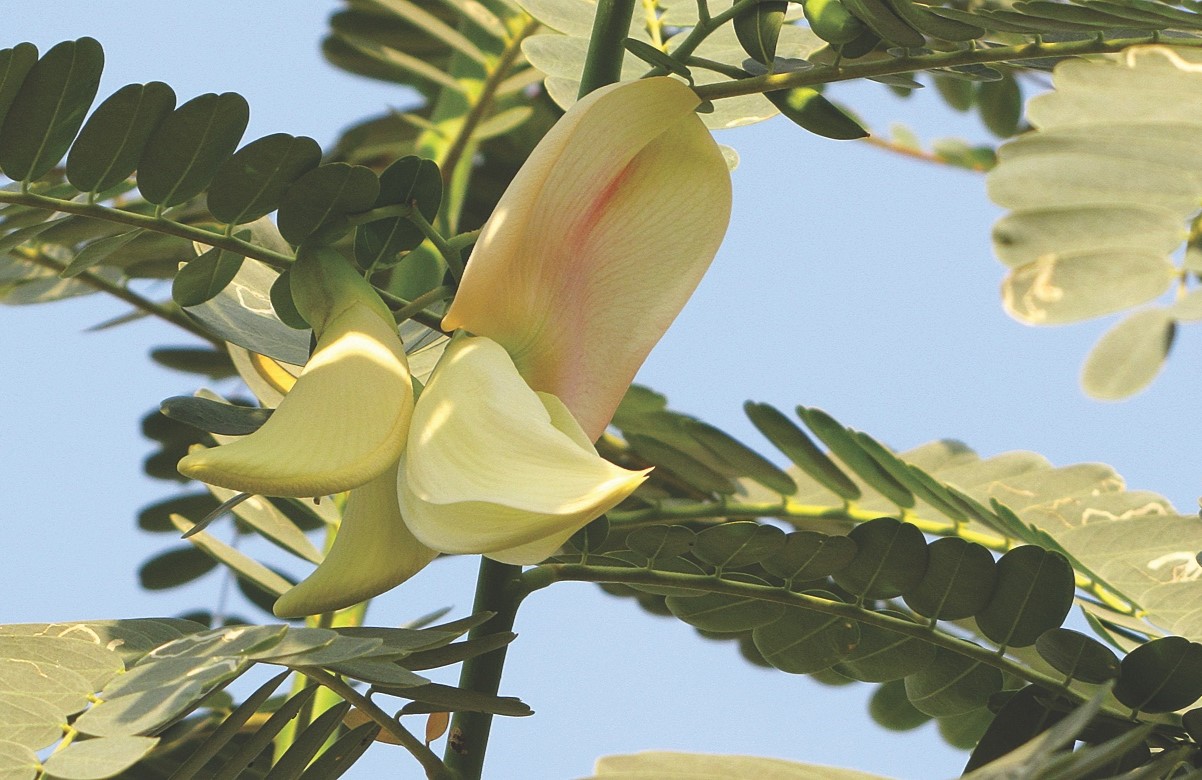
Sesbania flowers might not be the first bloom that comes to mind, but these vibrant blossoms hold a treasure trove of fascinating facts. Ever wondered why they thrive in wetlands or how they benefit the ecosystem? Sesbania flowers are not just pretty faces; they play a crucial role in nitrogen fixation, improving soil health. Their bright yellow petals attract pollinators like bees and butterflies, making them essential for biodiversity. Whether you're a gardening enthusiast or just curious about nature, learning about Sesbania flowers can be both enlightening and enjoyable. Ready to dive into the world of these remarkable blooms? Let's get started!
Key Takeaways:
- Sesbania flowers are not only beautiful but also nutritious, providing essential vitamins, minerals, and even protein. They can be a valuable addition to vegetarian diets and offer benefits for eye health and bone strength.
- Beyond their culinary and aesthetic appeal, Sesbania flowers have medicinal and environmental benefits. They possess anti-inflammatory and antioxidant properties, aid in digestion, improve soil fertility, and help prevent soil erosion.
What is Sesbania Flower?
Sesbania flower, often called agati or hummingbird tree flower, is a unique and versatile bloom. Found in tropical and subtropical regions, it has many uses and benefits. Let's dive into some fascinating facts about this intriguing flower.
Botanical Characteristics
Understanding the botanical aspects of the Sesbania flower helps appreciate its uniqueness.
- Scientific Name: The Sesbania flower belongs to the genus Sesbania and the species Sesbania grandiflora.
- Appearance: These flowers are usually white, red, or pink and have a distinct, elongated shape resembling a bird's beak.
- Growth Habit: Sesbania flowers grow on small trees or shrubs that can reach up to 15 feet in height.
- Leaves: The leaves are pinnate, meaning they have a feather-like structure with multiple small leaflets.
Nutritional Value
Sesbania flowers are not just pretty; they are also packed with nutrients.
- Rich in Vitamins: These flowers are a good source of vitamins A and C, which are essential for eye health and immune function.
- Mineral Content: They contain important minerals like calcium, iron, and phosphorus, contributing to bone health and oxygen transport in the blood.
- Protein Source: Surprisingly, Sesbania flowers have a decent amount of protein, making them a valuable addition to vegetarian diets.
Culinary Uses
Sesbania flowers are a culinary delight in various cultures.
- Edible Flowers: In many Asian cuisines, Sesbania flowers are used in soups, curries, and salads.
- Flavor Profile: They have a mild, slightly sweet taste that complements a variety of dishes.
- Traditional Recipes: In Thai cuisine, they are often used in a dish called "Kaeng Som," a sour curry.
Medicinal Properties
Beyond nutrition, Sesbania flowers have several medicinal benefits.
- Anti-inflammatory: These flowers have anti-inflammatory properties, making them useful in treating conditions like arthritis.
- Antioxidant: Rich in antioxidants, they help combat oxidative stress and reduce the risk of chronic diseases.
- Digestive Aid: Consuming Sesbania flowers can aid digestion and alleviate issues like constipation.
Environmental Benefits
Sesbania flowers also play a role in environmental sustainability.
- Soil Improvement: The plants are known for their ability to fix nitrogen in the soil, improving soil fertility.
- Erosion Control: Their root systems help prevent soil erosion, making them valuable in land management practices.
The Final Bloom
Sesbania flowers aren't just pretty faces in the plant world. These vibrant blooms pack a punch with their nutritional value, medicinal properties, and environmental benefits. From being a rich source of vitamins and minerals to playing a role in traditional medicine, sesbania flowers have proven their worth time and again. They also help improve soil health by fixing nitrogen, making them a gardener's best friend.
Whether you're looking to add a splash of color to your garden, boost your health, or contribute to a greener planet, sesbania flowers have something to offer. So next time you come across these bright blossoms, remember they're more than just eye candy. Dive into the world of sesbania and let these flowers surprise you with their many hidden talents. Happy gardening!
Frequently Asked Questions
Was this page helpful?
Our commitment to delivering trustworthy and engaging content is at the heart of what we do. Each fact on our site is contributed by real users like you, bringing a wealth of diverse insights and information. To ensure the highest standards of accuracy and reliability, our dedicated editors meticulously review each submission. This process guarantees that the facts we share are not only fascinating but also credible. Trust in our commitment to quality and authenticity as you explore and learn with us.


